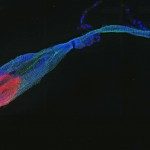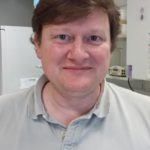Link to Pubmed [PMID] – 11030055
Bull Soc Pathol Exot 2000 Jul;93(3):182-92
The Mycobacterium avium complex (MAC) comprises a heterogeneous group of slowly-growing mycobacteria that are pathogenic for both humans and animals. Two genetically distinct species within MAC are M. avium, which tends to infect HIV-infected patients, and M. intracellulare more common among immunocompetent individuals. Contrary to M. intracellulare which relates to a single species, M. avium is separated into three subspecies; M. avium subsp. avium, a major opportunistic pathogen leading to a disseminated disease among terminal AIDS patients; M. avium subsp. paratuberculosis, causing Johne’s disease among ruminants and implicated in Crohn’s disease among humans; and M. avium subsp. silvaticum, a pathogen affecting birds that may cause chronic enteritis among calves but has not yet been associated with human disease. With the exception of mycobactin-dependent growth of M. paratuberculosis, most of the biochemical and cultural tests cannot discriminate among the three subspecies of M. avium. However, recently developed molecular methods and fingerprinting of strains using insertion sequences allows not only to distinguish among them but also further to explore the polymorphism of human and animal isolates. Numerous studies have underlined the probable role of various ecological niches (water, dust, soil, pigs, poultry and ruminants etc.) as a possible source of contamination for AIDS patients. This paper reviews the phenotypic and genotypic markers and epidemiology of M. avium complex organisms and current knowledge of the molecular basis of of inter-species transmission.

